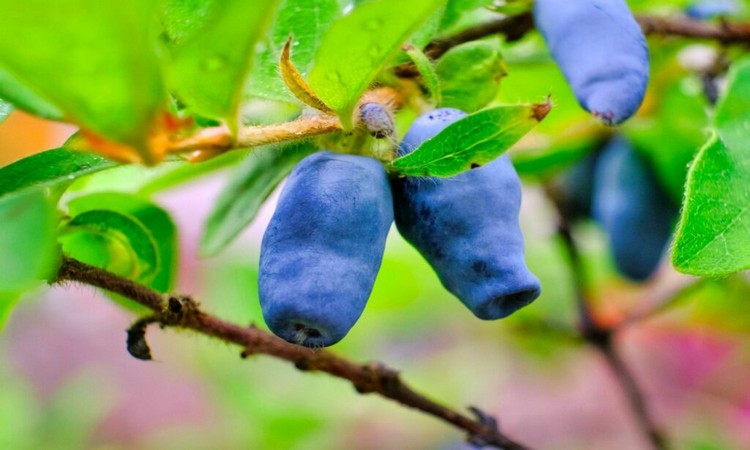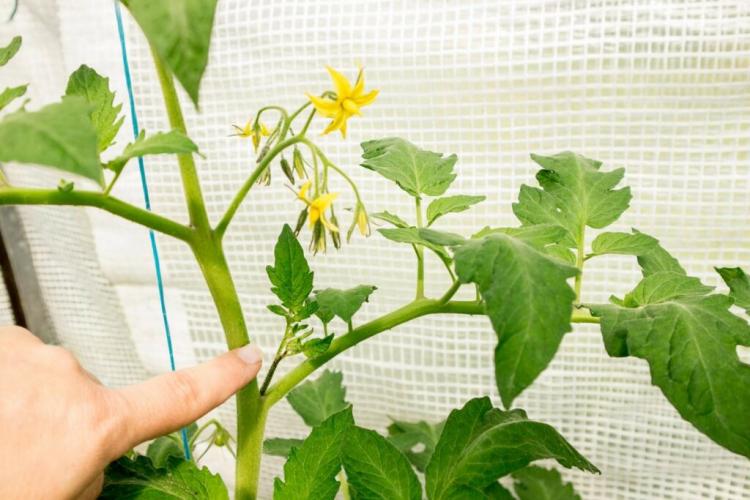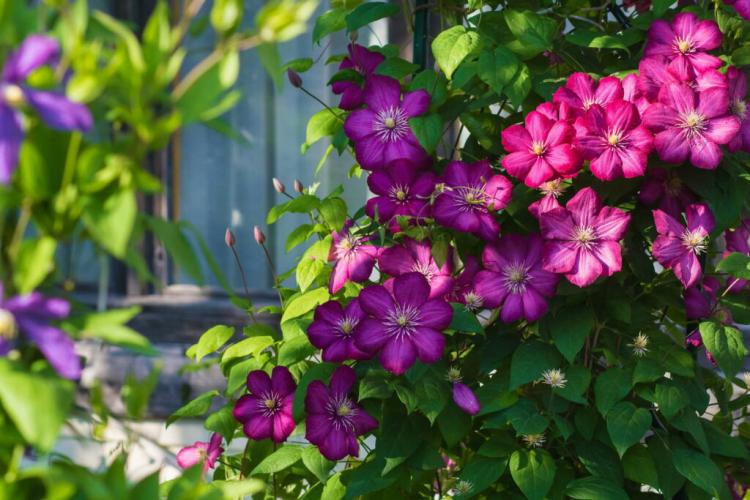Growing Red Cabbage – The Best Way to Plant
Red cabbage can be used to make a crunchy winter salad or a hearty side dish. We explain the cultivation options and how to properly take care of the young plants.

Early red cabbage seedlings can be planted in the bed from the beginning of April [Photo: Dolores M. Harvey / Shutterstock.com]
Red cabbage ( Brassica oleracea var. Capitata f. Rubra ), often referred to as red cabbage, is mentioned for the first time in historical sources from the 12th century. Red cabbage is not only a tasty winter vegetable, but also a bio-indicator: it changes color depending on the soil pH value. When grown on acidic soils, it appears red, whereas on alkaline soils it appears bluish, which can be informative information about one’s own garden. In our overview article you will find everything you need to know about the care, harvest and use of red cabbage. Below we explain in detail how to successfully plant red cabbage in the garden.
Sowing red cabbage: this is how it works
Table of Contents
The right time for sowing red cabbage depends heavily on the variety: a basic distinction is made between early, medium and late-ripening red cabbage varieties. You can find out more about this in our special article about the different types of red cabbage.
For the rearing of young plants, red cabbage seeds are sown in seed trays or in the cold frame, worked in flat and separated after emergence. Or the seeds – when sowing directly in the bed – are placed in straight seed grooves at a distance of 15 cm from each other and later transplanted at a greater distance. A potting soil with a lower nutrient content is best suited as a substrate for growing young plants, as this promotes vigorous root growth, which is advantageous for later transplanting. For example, our Plantura organic herb and seed soil is ideal for growing young plants thanks to its low nutrient content and loose structure. In addition, we trust in the sustainable production of our earth and completely dispense with the use of peat.
Sow early cabbage: Early red cabbage varieties can be sown from February to early March in heated greenhouses, heated cold frames or in a comparable frost-free, approximately 15 ° C cool location. After the first real leaves have developed, the young plants are pricked out, i.e. individually, and placed in more nutrient-rich soil. At a temperature of at least 15 ° C, the plants will continue to grow in a cold frame, greenhouse or bed under the protection of a film tunnel. Between May and June they develop into ready-to-harvest heads.
Sowing summer cabbage: If you want to harvest summer cabbage varieties, you should sow the seeds of the corresponding varieties in March or early April. Suitable places for sowing are unheated cold frames or beds covered with warming, transparent plastic sheeting. From May onwards, the young plants can either be moved from the cold frame into the bed or the tarpaulin on the bed is removed. Summer cabbage is ready for harvest between July and September.
Sow autumn and winter cabbage: The slowly developing late and very late red cabbage varieties are also sown in a cold frame or under a tarpaulin between March and early April. In addition, these varieties can be used for subsequent sowing in April and May, so that the late red cabbage can be harvested from October to December.
Tip: In mild regions without severe frosts, early cabbage can be sown in the previous year, so that the somewhat laborious rearing of young plants is not necessary. To do this, seeds can be sown directly into the bed in late summer, around mid-September, and these then rest for the winter. Temperatures should not fall below 0 ° C in the long term, even in winter; only short periods of frost should occur. The seeds begin to germinate in the following year, as soon as daily temperatures of around 10 ° C are reached, and form strong cabbages that can be harvested as early as May.
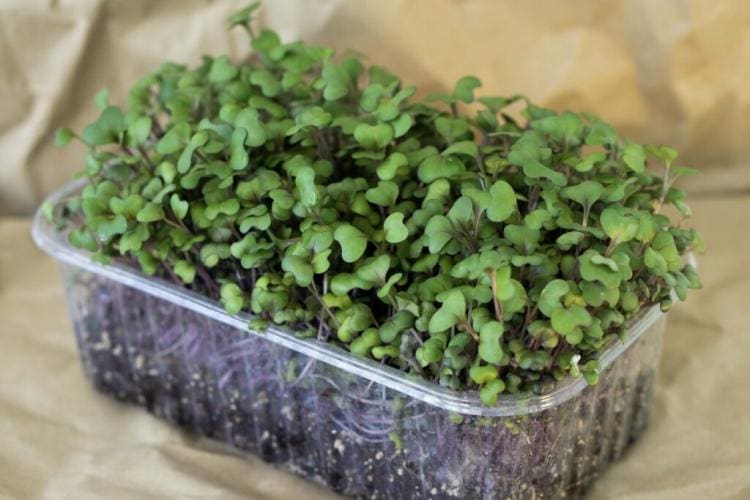
As soon as the red cabbage seedlings have more than four leaves, they can be pricked out [Photo: Kateryna_MA / Shutterstock.com]
Planting red cabbage
When to plant red cabbage
Those who have sown cabbage as described above have strong young plants. Many garden centers also offer pre-grown young plants. As a rule, only summer and autumn or winter cabbage are offered. Both can be planted in the bed from May to the end of June. If you use a greenhouse, a polytunnel, fleece or a transparent tarpaulin, you can even plant as early as April.
The young plants should be planted as deeply as possible, with the heart, i.e. the origin of the leaves, remaining above the ground. For this purpose, a hole can be dug with a normal planting trowel, the young plant placed in it, then covered with earth and lightly pressed on.
Tip: When planting out before mid-May, it is important to protect the small plants from the cold, as too intense a cold stimulus can trigger premature flowering and prevent head formation.
You Might also like Growing Black Cabbage
Red cabbage: planting distance, location and soil
Red cabbage feels most comfortable in a sunny to partially shaded location. Red cabbage can be grown particularly well in good garden soils, especially deep loamy soils with a high humus content and a weakly acidic to weakly basic pH value. As a highly nutrient-consuming crop, a high nutrient content in the soil is beneficial. Less humic and more calcareous soils are usually tolerated, but deliver lower yields. The correct spacing is important both when planting the young plants and when sowing direct: with a plant spacing of 50 cm and a row spacing of also 50 cm, the plants are given enough space for healthy growth. Late ripening varieties usually require a little more space and should therefore be planted with a planting distance of around 70 cm. The large distance between the plants gives the cabbage enough space to grow and also prevents infestation with pests such as the cabbage white butterfly ( Pieris rapae ).
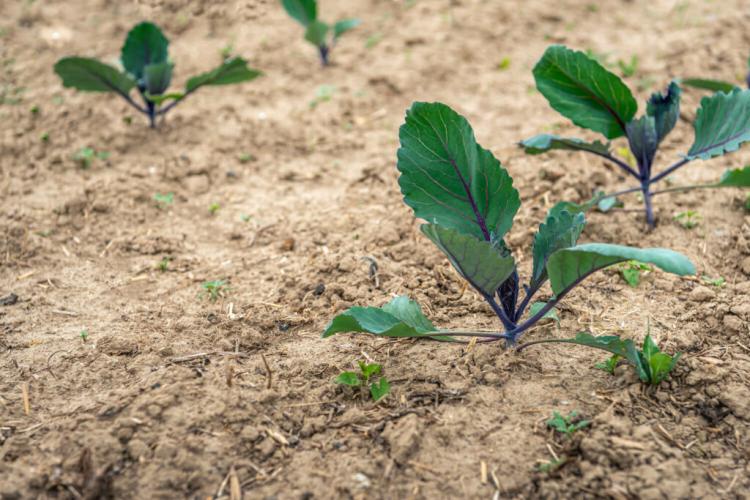
From mid-April, red cabbage can also be sown directly in the bed [Photo: Ruud Morijn Photographer / Shutterstock.com]
Mixed cultivation of red cabbage is possible without any problems, especially carrots ( Daucus carota subsp. Sativus ), lettuce, onions ( Allium cepa ), kidney beans ( Phaseolus vulgaris ) and tomatoes ( Solanum lycopersicum ) are particularly suitable. But also fragrant herbs such as thyme ( Thymus vulgaris ) and sage ( Salvia ) are good neighbors and at the same time keep pests away. In general, the following applies to types of cabbage: Cabbage next to cabbage is not compatible. Other cruciferous vegetables (Brassicaceae) such as rapeseed ( Brassica napus ) and mustard ( Sinapis ) are also not good mixed culture partners.
If you want to consider a sensible crop rotation in your bed, you should plan the red cabbage for the first forage. Good previous crops are, for example, potatoes ( Solanum tuberosum ) or legumes such as peas ( Pisum sativum ) and kidney beans ( Phaseolus vulgaris ), since legumes can bind nitrogen in the soil and are therefore ideal green manures. A break from cultivation of at least four years should generally be observed with other types of cabbage or cruciferous vegetables (Brassicaceae) in order to avoid the spread of diseases such as brassicae (Plasmodiophora brassicae) , a harmful fungal disease.
You Might Also Like The Cabbage Rose (Rosa x Centifolia)
Tip for the balcony : It is also possible to grow the red cabbage in a pot. A pot with a diameter of at least 20 cm and a depth of 20 cm should be used for this, which is placed in a sunny to partially shaded location. Only one head of cabbage should be planted per bucket, otherwise there could be competition for water and nutrients due to the limited space between several plants. Regular watering is particularly important for pot cultures.
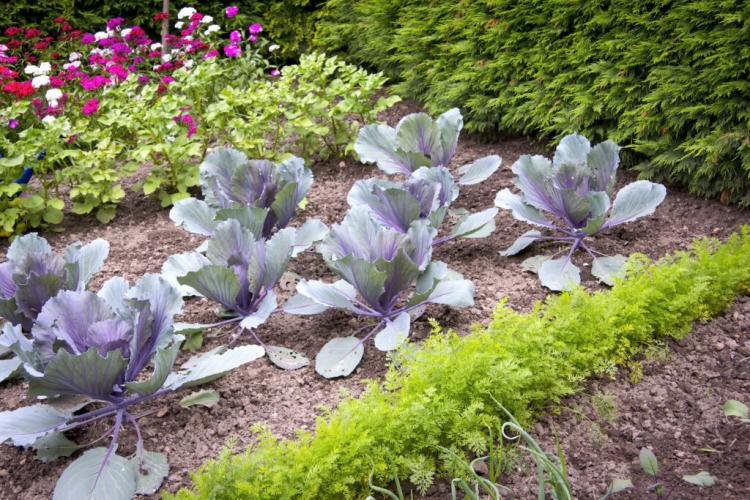
Red cabbage can be grown well in mixed culture alongside numerous other plants [Photo: photolike / Shutterstock.com]
Planting Red Cabbage: A Brief Summary
- In order to provide the red cabbage with nutrients right from the start, green manuring of the area makes sense even before cultivation.
- The right time for growing young plants or sowing them in the bed depends on whether early, summer or autumn cabbage is to be grown. In general, red cabbage can be brought forward to young plants from February or sown directly in the bed from mid-April.
- A high-quality potting soil with a lower but balanced nutrient content, such as our Plantura organic herb and seed soil, is suitable for growing young plants, as this promotes root growth.
- The ideal planting distance for early varieties is 40 to 50 cm, for late varieties around 70 cm, as they stay longer in the bed.
- Plants that are set early should be protected from night frosts by a fleece, a tarpaulin or in the greenhouse.

The red cabbage usually tolerates short frosts without any problems, which makes it the perfect winter vegetable [Photo: Trong Nguyen / Shutterstock.com]
You Might also Like Growing Pointed Cabbage
Proper care during the cultivation
As soon as the young plants have been planted in the bed, care begins: the small plants should be raked regularly to prevent weeds from competing for light, water and nutrients. In addition, the cultivation loosens the soil and improves ventilation. Especially on dry days you should water regularly and intensively because the root system is still weak so that the red cabbage does not dry out. You can find out how to properly water and fertilize red cabbage and what pests there are when it is older in our overview article on red cabbage.
Are you looking for other types of vegetables that, together with the red cabbage, make a delicious winter salad? Then read our article on growing and caring for sugar loaf.


